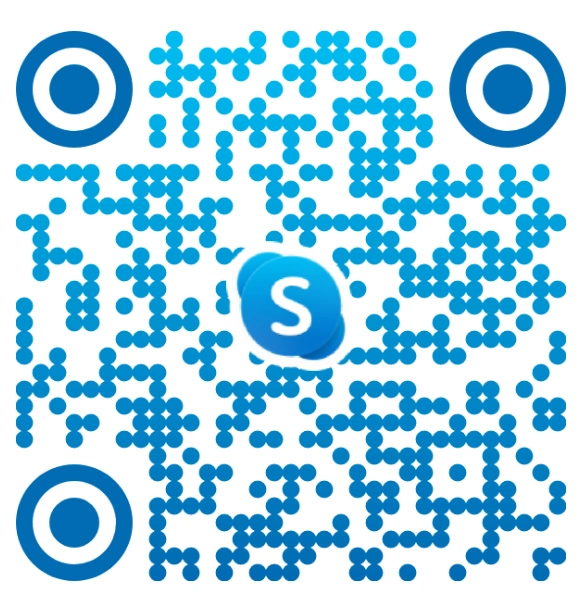Zapier vs. Make: Which Automation Tool Will Take Your Workflow to the Next Level?
Introduction
In today’s fast-paced business environment, efficiency is everything. Workflow automation tools like Zapier and Make (formerly Integromat) help streamline repetitive tasks, save time, and boost productivity. These no-code automation platforms enable businesses to connect apps and automate workflows without writing code.
Choosing the right tool can significantly impact your operations. In this detailed Zapier vs Make comparison, we’ll explore key features, pricing, ease of use, and real-world use cases. Whether you’re a startup or a growing enterprise, understanding how these workflow automation software options stack up will help you choose the best automation platform for your needs.
We’ll also look at their strengths, weaknesses, and where they fit in today’s landscape of business automation tools, covering everything from multi-step automation to conditional logic, API-based workflow, and integration platforms. By the end, you’ll know which tool can truly take your workflow to the next level.
What is Zapier?
Zapier is a cloud-based automation platform that allows users to connect their favorite apps and automate tasks. With over 5,000 app integrations, it offers a simple way to automate repetitive workflows without writing a single line of code. It’s widely recognized for its ease of use and ability to create workflows quickly.
Key Features of Zapier
- Ease of Use: Zapier’s intuitive interface makes it easy to create automated workflows, called “Zaps,” by linking different apps.
- Wide App Integration: It supports over 5,000 apps, including popular platforms like Google Sheets, Slack, and Trello.
- Multi-step Zaps: Allows you to automate complex workflows with multiple steps.
- Filters and Actions: Enables more control over when and how workflows are triggered.
Popular Use Cases for Zapier
- Automating lead generation by syncing CRM data with email marketing tools.
- Streamlining social media posting schedules by connecting content management tools with social platforms.
- Simplifying e-commerce by automating order processing and customer notifications.
Who Should Use Zapier?
Zapier is perfect for small to medium-sized businesses or individuals who need to automate simple to moderately complex tasks without requiring coding knowledge. It’s also great for those looking for quick, no-hassle integrations between apps.
What is Make (formerly Integromat)?
Make, formerly known as Integromat, is another powerful no-code automation platform designed for those looking to automate complex workflows. It’s ideal for users who need to integrate multiple apps and systems, allowing for advanced customizations and intricate processes.
Key Features of Make
- Visual Workflow Builder: Make offers a visual interface to build and visualize your workflows, making it easier to design complex automations.
- Advanced Logic: It supports advanced features like conditional logic, loops, and error handling.
- API Integration: Make excels at handling API-based workflows, which is a major advantage for businesses that require deeper integrations.
- Multi-step Automations: Just like Zapier, Make allows for multi-step workflows but provides greater flexibility in execution.
Popular Use Cases for Make
- Automating data processing workflows for SaaS companies.
- Managing complex business process automations in large enterprises.
- Integrating CRM, ERP, and accounting systems for streamlined operations.
Who Should Use Make?
Make is ideal for businesses with complex workflow needs or tech-savvy users who require more advanced features like API connections, conditional logic, and deep customizations. It’s especially useful for large enterprises or teams with a dedicated IT department.
Also Read : LangGraph vs AutoGen vs CrewAI: Choosing the Right Framework for Multi-Agent Workflows
Zapier vs. Make: Feature Comparison
Ease of Use
- Zapier: Known for its user-friendly design, Zapier allows users to create workflows quickly with minimal learning. The drag-and-drop interface simplifies the process.
- Make: While slightly more complex, Make offers a more detailed and customizable experience for those who need it.
Automation Types (Single-step vs Multi-step)
- Zapier: Great for single-step automations but also supports multi-step workflows.
- Make: Specializes in multi-step workflows, offering more flexibility and control over automation.
Conditional Logic & Branching
- Zapier: Zapier’s conditional logic options are limited compared to Make.
- Make: Supports advanced conditional logic and branching, which makes it ideal for intricate workflows.
Customization Options
- Zapier: Provides customization through built-in app integrations, but is somewhat limited for more advanced needs.
- Make: Offers extensive customization, including API integrations, custom functions, and advanced logic.
Visual Workflow Building
- Zapier: While Zapier provides basic workflow-building tools, it lacks a detailed visual builder.
- Make: Known for its visual workflow builder, Make allows users to see and manage workflows visually, making it easier to create complex automations.
Task Limits and API Access
- Zapier: Limits the number of tasks per month on its free and lower-tier plans.
- Make: Provides more flexibility with task limits, especially for users on higher plans. It also excels at API-based workflows.
Integrations: Which Tool Offers Better App Support?
Number of Integrations
- Zapier: Boasts over 5,000 app integrations, making it one of the most widely compatible automation tools available.
- Make: Supports a slightly lower number of apps but offers deeper integration with specialized tools and custom APIs.
Popular App Integrations Supported by Both
- Zapier: Slack, Gmail, Google Sheets, Trello, Mailchimp, Shopify
- Make: HubSpot, Google Drive, Jira, Airtable, Facebook, WooCommerce
Ability to Integrate with Custom Apps and APIs
- Zapier: While Zapier allows custom AI integrations, it is limited in terms of flexibility when compared to Make.
- Make: Offers API-based workflows that make it easier to integrate with custom apps or systems that aren’t supported natively.
Also Read : Exploring Advanced Algorithms and Frameworks for Automated Data Processing
Pricing Breakdown: Which Tool Offers More Value?
Free Plans Comparison
- Zapier: Offers a free plan that allows for 100 tasks per month but is limited to single-step workflows.
- Make: Provides a free plan with up to 1,000 operations per month and supports multi-step workflows.
Paid Plans and Scalability
- Zapier: Zapier’s paid plans range from $19.99/month for the Starter plan to $599/month for the Enterprise plan. It’s ideal for small to medium businesses but can get costly as your needs grow.
- Make: Make offers more flexible pricing, with plans starting at $9/month. Its higher-tier plans are priced competitively and provide more tasks and advanced features.
Cost-Effectiveness for Small Businesses vs. Enterprise Solutions
- Zapier: While Zapier is cost-effective for small businesses, it may not scale as efficiently for larger enterprises.
- Make: Make is a more affordable option for enterprises looking for advanced features and higher scalability.
User Experience: Interface and Usability
Ease of Use for Beginners vs. Advanced Users
- Zapier: Perfect for beginners who need a simple, intuitive platform for automating basic workflows.
- Make: Better suited for advanced users who need to create more intricate workflows or those with specific integration needs.
Visual Flow Builder: Make vs. Zapier
- Zapier: Lacks the level of visual customization available in Make.
- Make: The visual workflow builder is a standout feature, making it easier for users to create and manage workflows visually.
Learning Curve and Support Resources
- Zapier: Easy to pick up for beginners, with a wealth of tutorials and community support.
- Make: Steeper learning curve but offers robust resources, including webinars and documentation, for those who need more advanced automations.
Performance and Speed: How Efficient Are They?
Execution Time for Tasks
- Zapier: Fast task execution, especially for simple workflows.
- Make: Task execution can take slightly longer, especially for complex workflows, but the added complexity often provides more precise results.
Task Volume Handling
- Zapier: Handles a moderate volume of tasks efficiently, but may struggle under heavy workloads.
- Make: Designed for high-volume tasks, Make handles large workflows with ease.
Reliability and Uptime
- Zapier: Reliable, but experiences occasional downtime during peak usage.
- Make: Known for its strong uptime and reliability, especially for businesses handling critical workflows.
Also Read : Revolutionize Your Workflow: How AI Automation Software is Redefining Business Efficiency
Best Use Cases: When to Choose Zapier vs Make
Simple Automations
- Zapier: Perfect for automating basic tasks, such as transferring data between apps or sending notifications.
Complex Workflows
- Make: Best suited for complex, multi-step workflows involving multiple apps and detailed logic.
For Integrating Multiple Apps
- Zapier: Great for quick integrations with popular apps.
- Make: More powerful for integrating a larger number of apps or for businesses with specific integration needs.
For Businesses at Scale
- Zapier: Suitable for small businesses or startups with simple automation needs.
- Make: Better for enterprise solutions that require advanced automation capabilities and scalability.
Case Studies: Real-World Examples of Zapier and Make in Action
Case Study 1: Small Business Using Zapier for Marketing Automation
A small marketing agency uses Zapier to automate lead capture from online forms into a CRM system, enabling automatic email campaigns and follow-ups, saving hours of manual work every week.
Case Study 2: Tech Startup Using Make for Complex Data Workflows
A SaaS company uses Make to automate data processing between their CRM, email marketing software, and internal analytics tools, streamlining their customer onboarding process.
Case Study 3: Large Enterprise Scaling with Make and Zapier
A large multinational corporation uses both Zapier and Make to automate HR workflows, integrate accounting systems, and streamline project management tasks.
Why Choose Amplework for Your Automation and Integration Needs?
Amplework is a leading provider of AI automation services, helping businesses harness the full potential of tools like Zapier and Make. Whether it’s automating routine tasks or building complex, multi-step workflows, we deliver tailored solutions that streamline operations and boost productivity. Our experts ensure you choose the right automation platform and experience smooth, efficient integration every step of the way.
We specialize in no-code automation platforms, making it easy for businesses of all sizes to automate without needing extensive technical knowledge. From integrating popular apps like Slack and Google Sheets to setting up advanced workflows, Amplework supports you at every stage of the automation journey. Whether you’re a small business or a large enterprise, we tailor our services to optimize your workflow.
At Amplework, we understand that the right workflow automation software should simplify your operations. We help you implement smart, scalable solutions that save time, enhance efficiency, and drive results. Let us guide you in maximizing the potential of automation tools to take your business to the next level.
Final Words
Zapier and Make (formerly Integromat) are top workflow automation tools that help streamline tasks and boost productivity. If you prefer simplicity and quick setup, Zapier is ideal—perfect for small teams or businesses seeking a no-code automation solution. On the other hand, Make offers more advanced features like visual builders, conditional logic, and multi-step workflows, making it better for complex processes.
Both tools support No-Code/Low-Code solutions, making automation accessible even to non-technical users. Whether you’re starting your automation journey or managing large-scale operations, these platforms can reduce manual effort and increase efficiency.
For businesses aiming to scale and optimize workflows, either tool can be a game-changer. We recommend exploring both to find the one that aligns best with your goals. Choosing the right automation software tool will elevate your business operations and drive long-term success.
Frequently Asked Questions (FAQ)
What’s the difference between Zapier and Make?
Zapier vs Make are both workflow automation tools, but they serve different purposes. Zapier automation is simpler, ideal for automating basic tasks and connecting popular apps, while Make automation offers more flexibility with features like multi-step workflows, conditional logic, AI solutions, and custom app integrations for more complex tasks. Comparison shows that Zapier excels in ease of use, while Make shines in customizability and advanced workflows.
Which automation tool is better for beginners: Zapier or Make?
For beginners, Zapier is often recommended due to its straightforward interface and no-code automation capabilities. It’s a great fit for small businesses or individuals looking to automate simple tasks without a steep learning curve. Make automation, while offering more powerful features, might be overwhelming for those new to automation.
Can I use Zapier and Make together?
Yes, you can integrate both tools to meet diverse needs. For example, you might use Zapier for automating simple workflows and Make for more complex tasks requiring API-based workflow or advanced conditional logic.
Which platform offers more integrations: Zapier or Make?
Zapier supports over 5,000 apps, making it a leader in app integrations. While Make automation supports fewer apps, it offers more customization options for custom app integrations, making it a better choice for businesses needing specific, tailored connections.
How do I decide which tool to use for my business?
The decision between Zapier vs Make depends on your business needs. If you need quick, easy-to-use workflow automation software for simple tasks, Zapier is the right choice. For complex workflows, multi-step automation, or integrating multiple apps with deep customization, Make is a more robust option.


 sales@amplework.com
sales@amplework.com
 (+91) 9636-962-228
(+91) 9636-962-228





